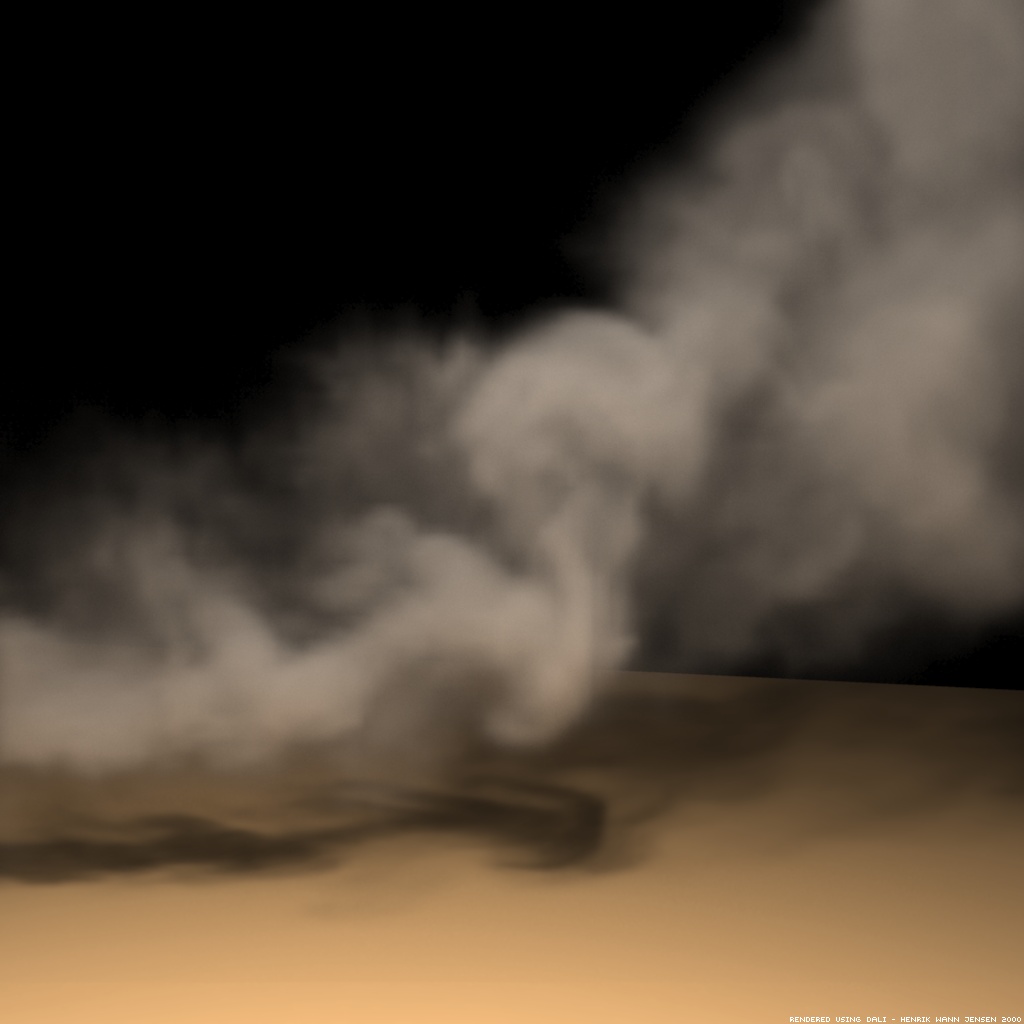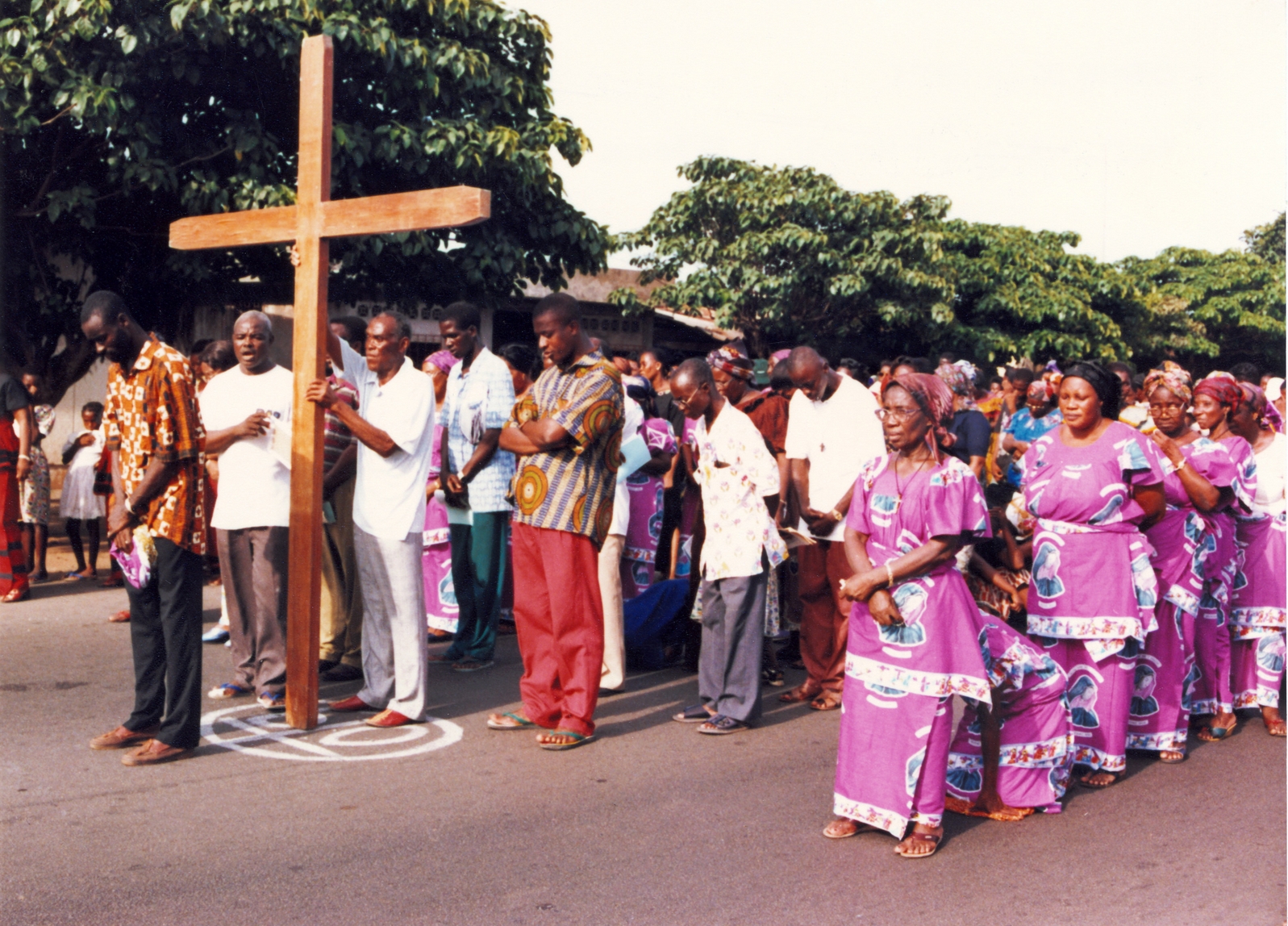From Forums of the Virgin Mary (initial translation)
The smoke of the evil one attacks from within.
In 1884 Leo XIII had a vision of a number of demons attacking the Vatican, so he wrote the prayer to Saint Michael the Archangel to be recited after Mass, to defend the Church.
The one that would later be declared optional as a result of the Second Vatican Council and in fact was removed.

Today the modernists within the Church maintain that the Council was very positive for the Church, many of the traditionalists say that it was negative, and those who are in the middle, who are the majority, say that it had light and shade (chiaroscuro).
Here we will talk about what Paul VI meant by the smoke of satan entering the Church, and how this relates to the resolutions of the Council and their implementation.

In 1972, 8 years after the end of the Second Vatican Council, Paul VI said an enigmatic phrase.
That the “smoke of satan” had infiltrated some crevasse in the Vatican.
And 5 decades later we see that the Church has lost its position in the West and is mired in confusion.
And the modernist forces, within the Church, seem to be more active than ever, lobbying to change doctrinal aspects of Catholicism by force of facts.
Paul VI recognized that several problems had arisen throughout the universal Church after the Second Vatican Council with a growing wave of blasphemies, desacralization, and secularization.
These evils did not come exclusively from outside the Church, Pope Paul VI warned.
But through some fissure the smoke of satan had entered the temple of God and was there.
The image of “Satan’s smoke” also suggested that the atmosphere within the Church had become polluted.
And also that the vision had been obscured by smoke, so that the shepherds no longer saw the problems clearly.
This satanic smoke was not a mere allegory, because Paul VI said,
“There has been an intervention of an adverse power, his name is the devil, and that this preternatural intervention had come precisely to disturb and stifle the fruits of the Second Vatican Council.”
It was very accurate when a commentator said that.
“Once the bishops led processions to renowned miracle sites, now, in a hyper-academic climate, they ignored these practices.”
The Pope also mentioned the loss of the religious habit and the outward manifestations of religious life.
And that everything supernatural in the biblical account, in the lives of the saints and in the teaching of the Church, began to be assumed to be impossible, a fable.
He said,
“Doubt has entered our consciences, and it entered through a window that should have been opened to the light,” referring to the Council.
This denial of the supernatural is now exercising its dominance in the Church, the pontiff lamented.
And he specifically said that:
“There was the belief that after the Council there would be a sunny day for the history of the Church.
Instead, it was the arrival of a day of clouds, of tempest, of darkness, of uncertainty.
Instead of faith, now there is skepticism. Instead of exorcism, there is psychologism.
Mass attendance plummeted, thousands of priests and religious abandoned their vocations, parochial schools closed, several priests became guerrillas, and Marxism entered through Liberation Theology.
And yet Church leaders avoided expressions of urgency and crisis.
A climate was installed in which to make a career in the hierarchy at the end of the 20th century, clergymen were expected to suppress problems instead of facing them, to calm the faithful instead of waking them, to hide problems instead of admitting them.
So few Catholics actually fell back on the tools for understanding the faith and for judging it to be heresy. And what is left of some priests is their ability to entertain people with inspiring thoughts.
And in that environment, when the bishops learned that a priest had abused a young man, they did everything possible to “handle” the issue [psychologically], so that everything ran smoothly, and to avoid drawing public attention to the problem.
Thus the abuse continued, as did theological dissent and liturgical abuse.
But eventually the cover-up of the abuse failed and the outrageous truth emerged.
Now that this evidence, suppressed for decades, has been made public, the bishops’ negligence [and surrender to psychology, the spirit of the age] is unmistakable.
Paul VI argued that the work of the Council was a good thing that was frustrated — or partially frustrated — by the social crisis that broke out in the developed world at that time.
In other words, the cultural crisis of the late 1960s and early 1970s, which also penetrated the Church.
However, we must consider that the Second Vatican Council was a battlefield between clergymen who wanted the Church to continue in the doctrinal orthodoxy that came from the apostles.
And another emerging force that wanted to change important parts of the doctrine.
And in that infighting, many of the council’s resolutions were drafted in ambiguous and unclear language to make it acceptable to both parties.
That is why the media were able to interpret them in a way that modifies the traditional Catholic doctrine.
There are great themes in which the Council had positive fruits, such as highlighting the role of the laity within the Church or the centrality of Jesus Christ.
And others in which its fruits were negative, such as with regard to missionary fervor.
According to the great deceased missionary, Father Piero Gheddo, the roots of the current missionary cooling must be sought in the Second Vatican Council.
The idea that all religions are equivalent cooled Catholic missionary fervor.
Because if all religions are more or less equivalent, what is the interest of evangelizing other continents?
A few years ago we published an unusual piece of news: a Catholic missionary priest, who lived 40 years among the Yanomami, boasted in his retirement that he did not baptize any of them “by the grace of God” as he said, because if he had done so, he would have removed the indigenous to their culture.
So the focus of evangelism was changed.
Missionary action was reduced and the religious obligation to evangelize turned into a social commitment.
The important thing was to love your neighbor, do good, give testimony of service, but not extend faith — as if the Church were an aid agency, to remedy the injustices and plagues of society.
Father Piero Gheddo says that, “The missionaries of the 16th century were convinced that the unbaptized person was lost forever. But after the Second Vatican Council, this conviction was definitely abandoned. And the result was a crisis. Because without this attention to salvation, faith loses its foundation.”
And Cardinal Ratzinger wondered [fretted] in the same vein: why should one try to convince people to accept the Christian faith when one can save even without it?
And why should people accept the Christian faith and Christian morality in order to save themselves, if it is not necessary?
He then concludes that if faith and salvation are not interdependent, faith becomes less motivating.
And that is why Ratzinger opposed the thesis of Karl Rahner, a fundamental figure of the Council, who held that all religions are equally valuable in achieving eternal life.
So the Council then was a battlefield between the modernists and the orthodox, and its documents, often ambiguous and unclear, gave more power to the modernists, who, allied with atheist sectors outside the Church, were able to communicate that their papers had been successful.
And what is the consequence of this handling?
The apostasy in which we live, which had already been prophesied centuries before would happen.
Our Lady of Good Success announced to Mother Mariana de Jesús Torres in the seventeenth century, the total decline of the faith in the middle of the twentieth century when she told the nun:
“At the end of the nineteenth century and until a little more than half of the twentieth century … passions will overflow and there will be a total corruption of customs because Satan reigns in the Masonic sects. They will tend mainly to corrupt the children of these times.”
And in 1846 Our Lady of La Salette said that “some priests, for their wicked lives, for their irreverence and impiety in the celebration of the holy mysteries, for their love of money, the love of honors and pleasures, will have become sewers of impurity.”
And she added that many convents would no longer be houses of God, “but the grazing fields of the Asmodeans and their pleasure.”
(Asmodeus is a demon mentioned in the Book of Tobias and dedicated to corrupting families.)
Well, so far what we wanted to tell you about the wake-up call made by Paul VI in 1972, that the smoke of Satan had entered through some crack in the Church, how it happened and what its fruits were.

